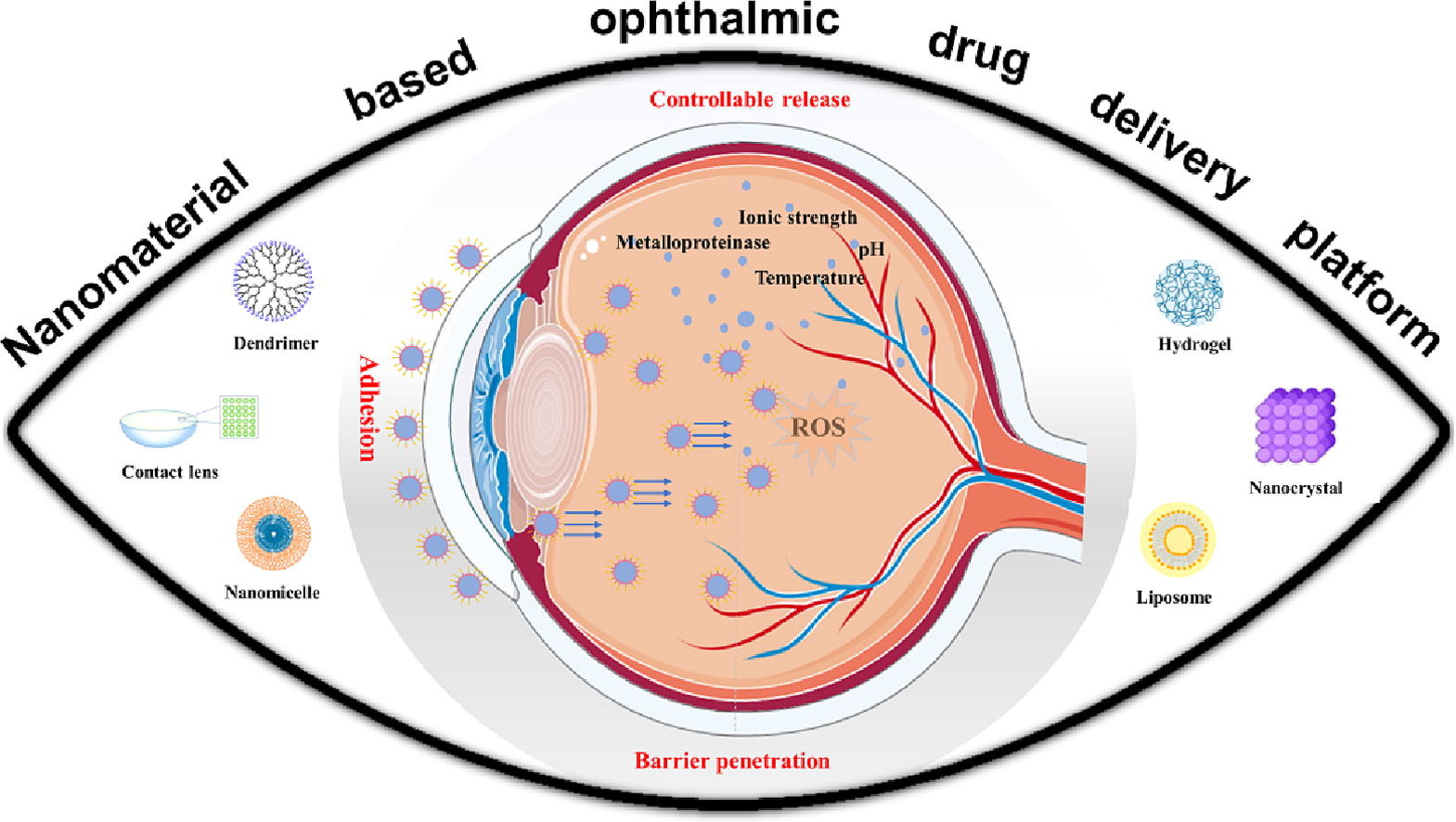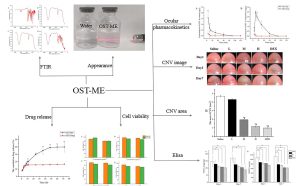Nanomaterial-based ophthalmic drug delivery

The low bioavailability and side effects of conventional drugs for eye disease necessitate the development of efficient drug delivery systems. Accompanying the developments of nanofabrication techniques, nanomaterials have been recognized as promising tools to overcome these challenges due to their flexible and programmable properties. Given the advances achieved in material science, a broad spectrum of functional nanomaterials capable of overcoming various ocular anterior and posterior segment barriers have been explored to satisfy the demands for ocular drug delivery. In this review, we first highlight the unique functions of nanomaterials suitable for carrying and transporting ocular drugs. Then, various functionalization strategies are emphasized to endow nanomaterials with superior performance in enhanced ophthalmic drug delivery. The rational design of several affecting factors is essential for ideal nanomaterial candidates and is depicted as well. Lastly, we introduce the current applications of nanomaterial-based delivery systems in the therapy of different ocular anterior and posterior segment diseases. The limitations of these delivery systems as well as potential solutions are also discussed. This work will inspire innovative design thinking for the development of nanotechnology-mediated strategies for advanced drug delivery and treatment toward ocular diseases.
Introduction
Ocular diseases pose a significant public health challenge, impacting the quality of life and potentially leading to vision impairment or total blindness1. According to the 2019 World Health Report, approximately 2.2 billion people are under visual impairment, while over 1 billion patients among them could have been prevented if receiving medical care services properly. With the aggravation of population aging, the incidence of ocular diseases has been increasing, which imposes substantial social and economic burdens2. The intricacy of the eye’s anatomy and physiological barriers poses substantial difficulties in the treatment of various eye disorders3. For example, due to the clearance progress (tear turnover, rapid lacrimation, blinking, and drainage), traditional ophthalmic formulations have problems with insufficient precorneal residence time and less than 5% of drug bioavailability4. Additionally, the presence of the corneal barrier and blood-retinal barrier greatly restrains the intraocular penetration of drugs5, 6 , necessitating the development of targeted or penetrating pharmacological therapies. Moreover, therapeutic effect often depends on the property of drug molecules, such as hydrophilic/hydrophobic character, molecular size, and stability and few drugs can respond to the complex physiological environment of the eye. To overcome these challenges, novel drug delivery systems with increased lesion targeting ability, optimized therapeutic responses, and improved patient compliance are required for more effective treatment of ocular diseases.
With the rapid advancement of nanoscience and nanotechnology, a multitude of nanomaterials with promising characteristics and functionalities have been developed for ocular drug delivery. Due to their ultrafine size, nanomaterials undergo significant alterations on surface electronic structure and crystal structure and exhibit a variety of novel properties and functions that the micro- or macro-scale counterparts do not possess. These unique characteristics make nanomaterials a flexible and promising alternative for developing efficient ocular therapeutics[7], [8], [9]. Currently, numerous studies have reported that a series of advanced properties including superior adhesion, barrier penetration, controlled release, and microenvironmental regulation have been endowed to nanomaterials, basing on the characteristics, symptoms, and locations of distinct eye diseases as well as specific treatment modalities and goals. Meanwhile, different kinds of functionally tunable nano dosage forms, such as liposomes, nanoemulsions, polymeric micelles, dendrimers, and nanogels, have sprung up in pharmaceutical research and bring new opportunities for ocular disease treatment. Furthermore, meticulous design and tailoring of the physicochemical characteristics of nanomaterials, including size, charge, shape, surface components, etc. enable the effect optimization of ocular drug delivery[10], [11], [12], [13], which directly mediate the interactions between nanomaterials and the eyes and further affect their bioactivities and treatment outcomes14. To date, numerous nanotherapeutic agents have been developed by virtue of nanotechnologies and manifested encouraging efficacies for treating various ocular disorders.
In this review, we systematically elaborate the programming strategies of advanced nanomaterials for the delivery of various ocular drugs (Fig. 1). From the varied therapeutic requirements of different eye disorders, we first summarize several customized performances and functionalities of nanotherapeutic agents in ocular drug delivery, allowing a comprehensive and updated understanding of related latest advancements. Then we introduce a range of nano dosage forms that have been widely developed and studied for eye drug delivery. The design principles and key factors contributing to the performance of nanomaterials are discussed as well. Finally, the treatment applications of nanotherapeutics in a series of ocular anterior and posterior diseases are outlined. We anticipate that this review would inspire new thoughts on innovative nanomaterial-based therapeutics for the treatment of ocular disease.
Read more
Guocheng Xie, Sisi Lin, Feng Wu, Jinyao Liu, Nanomaterial-based ophthalmic drug delivery, Advanced Drug Delivery Reviews, 2023, 115004, ISSN 0169-409X,
https://doi.org/10.1016/j.addr.2023.115004.
Read more on “Ocular Delivery” here:
- Controlled release, chitosan-tethered luteolin phytocubosomes; Formulation optimization to in-vivo antiglaucoma and anti-inflammatory ocular evaluation
- MeltSerts Technology (Brinzolamide ocular inserts via hot-melt extrusion)
- Development of Osthole-Loaded Microemulsions as a Prospective Ocular Delivery System for the Treatment of Corneal Neovascularization


